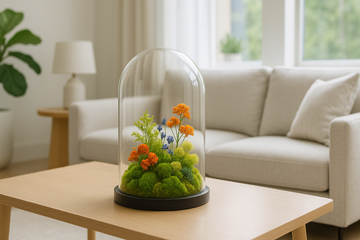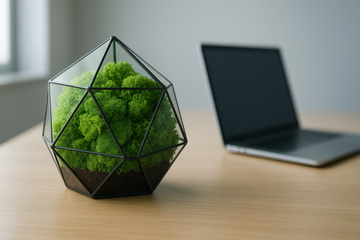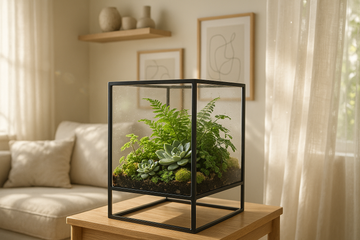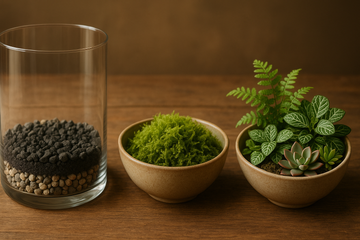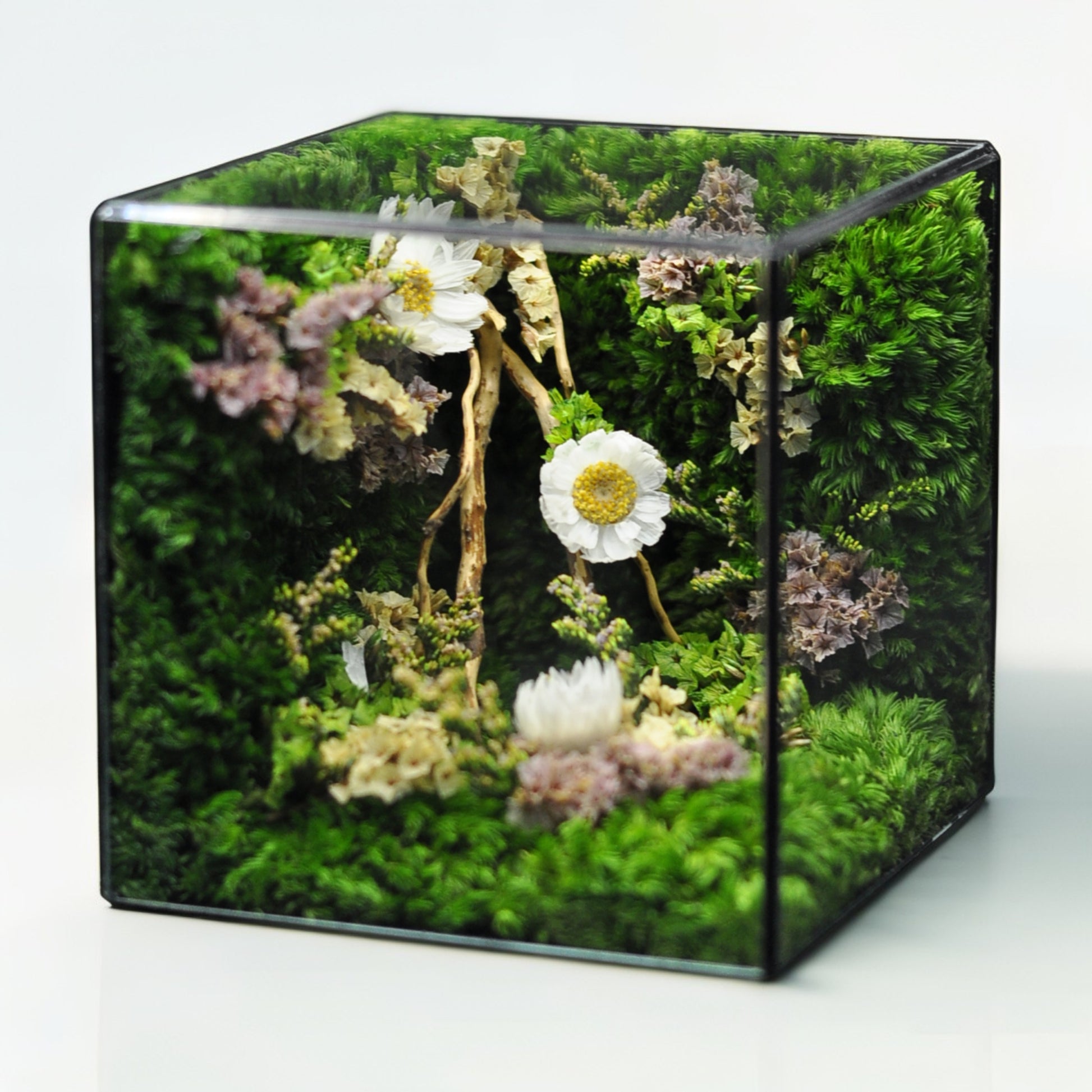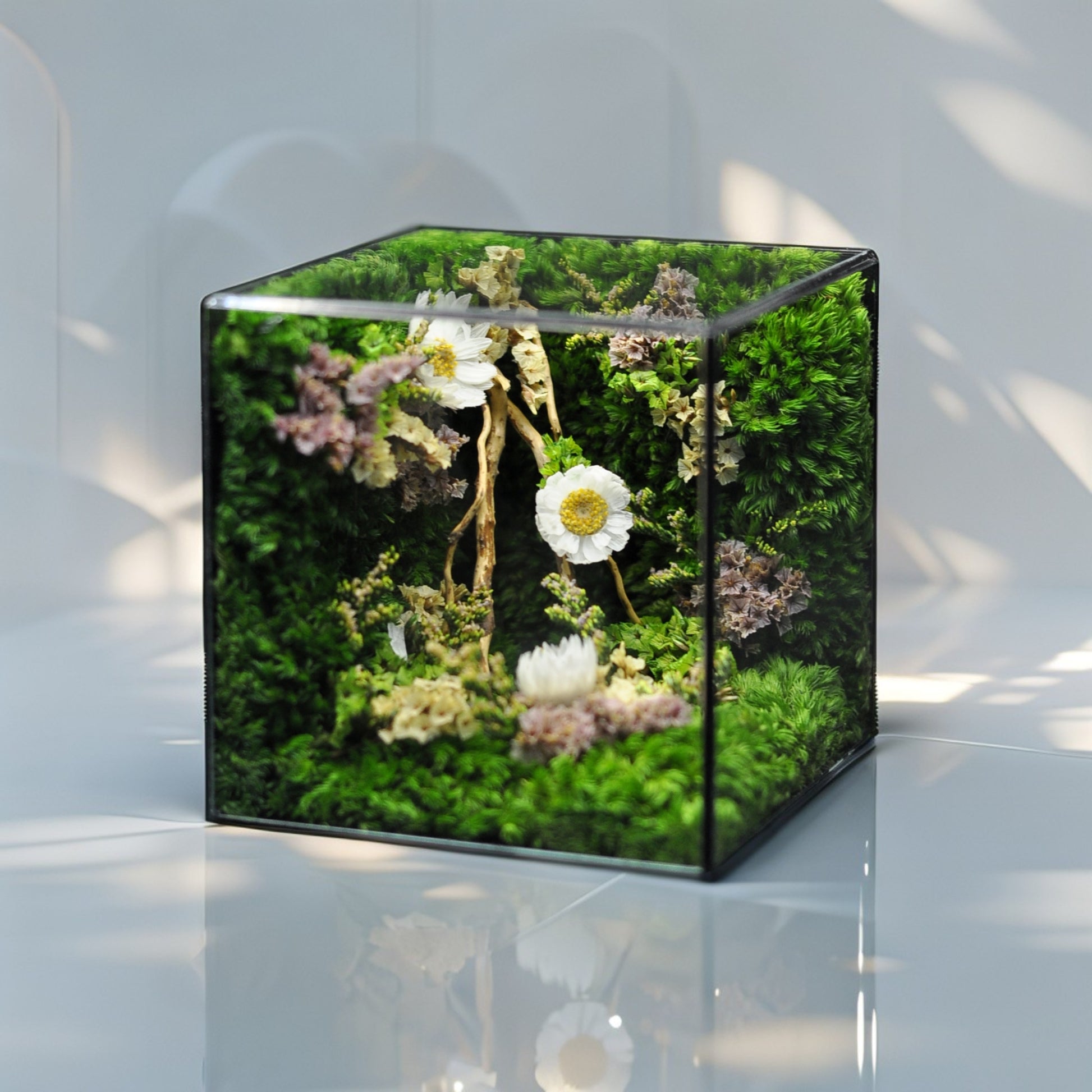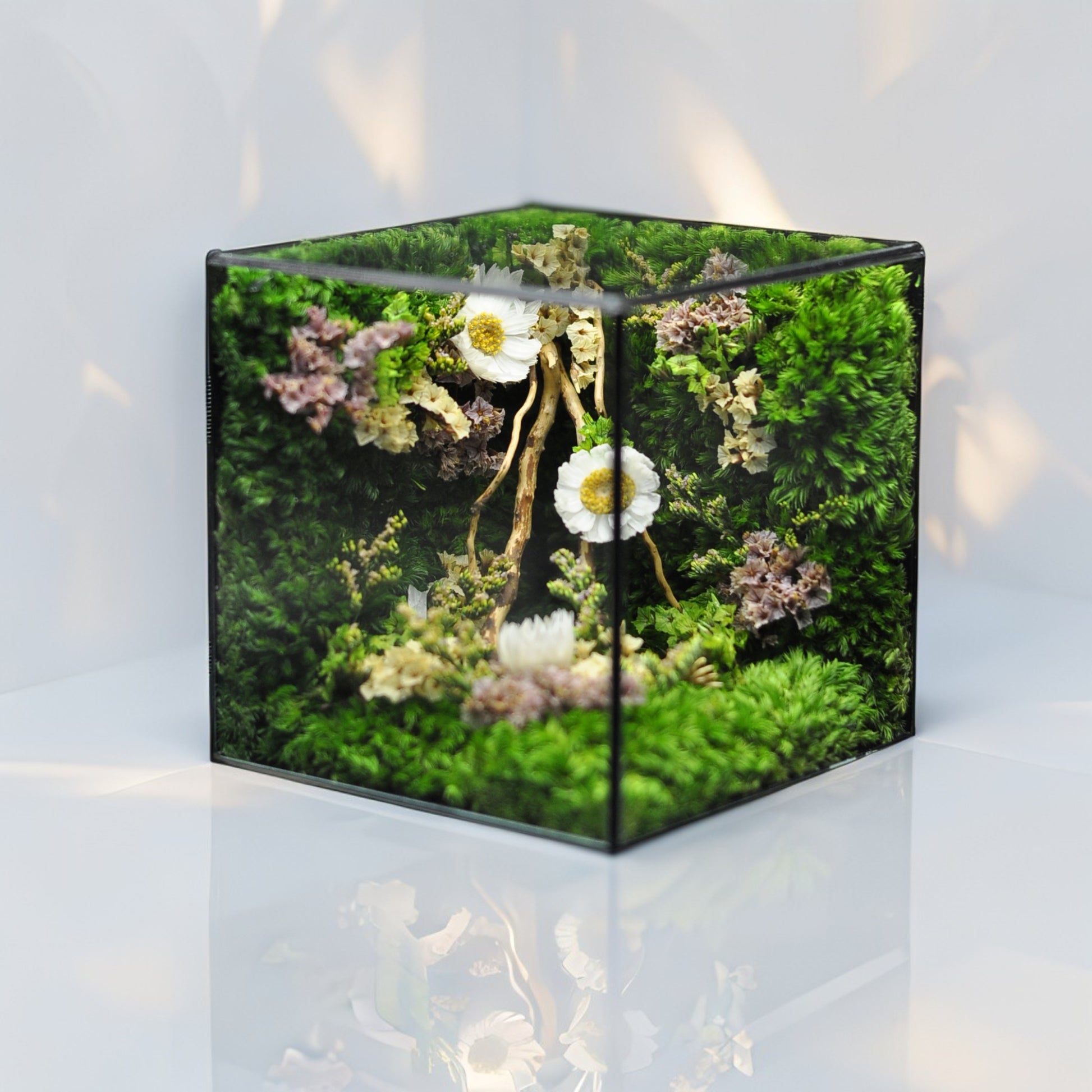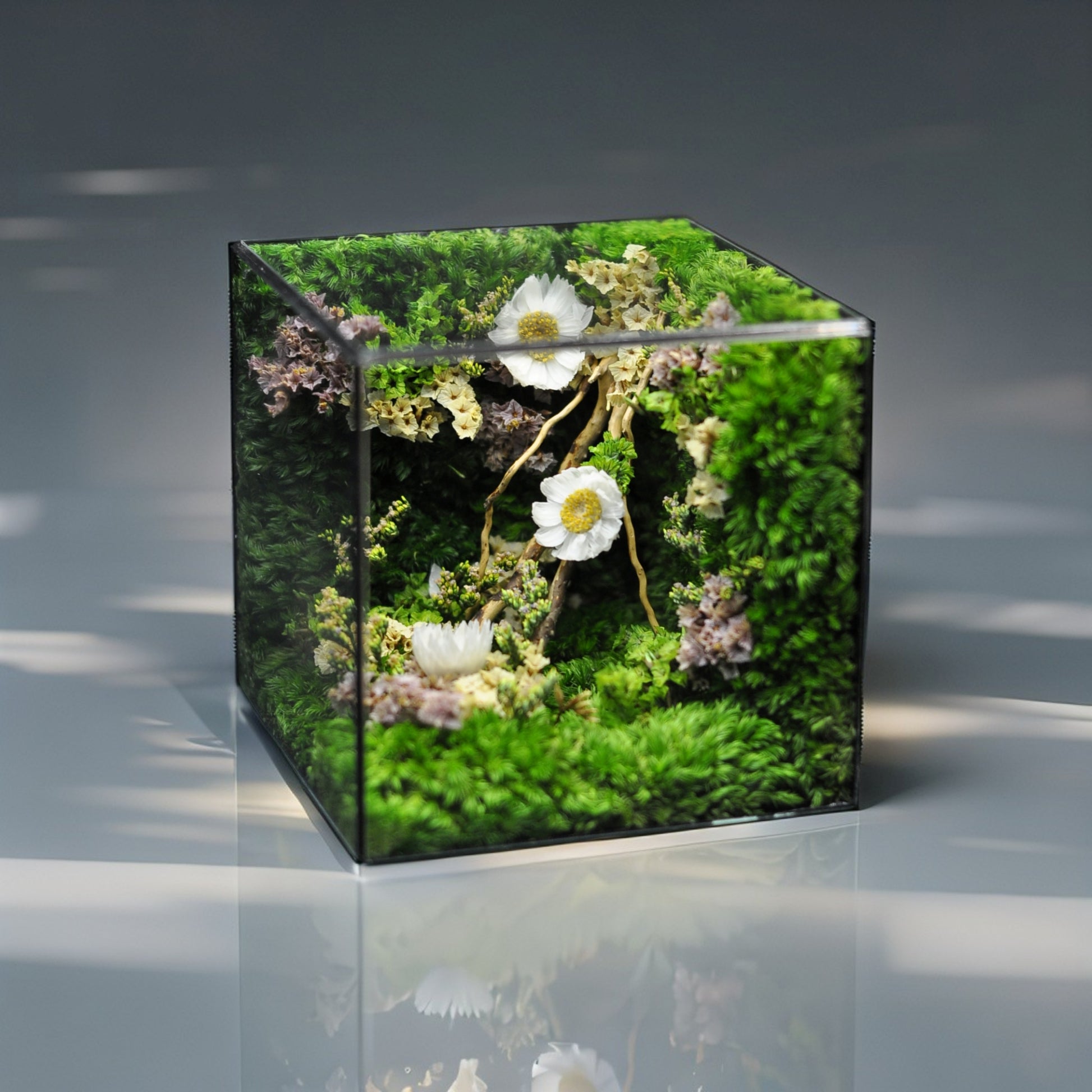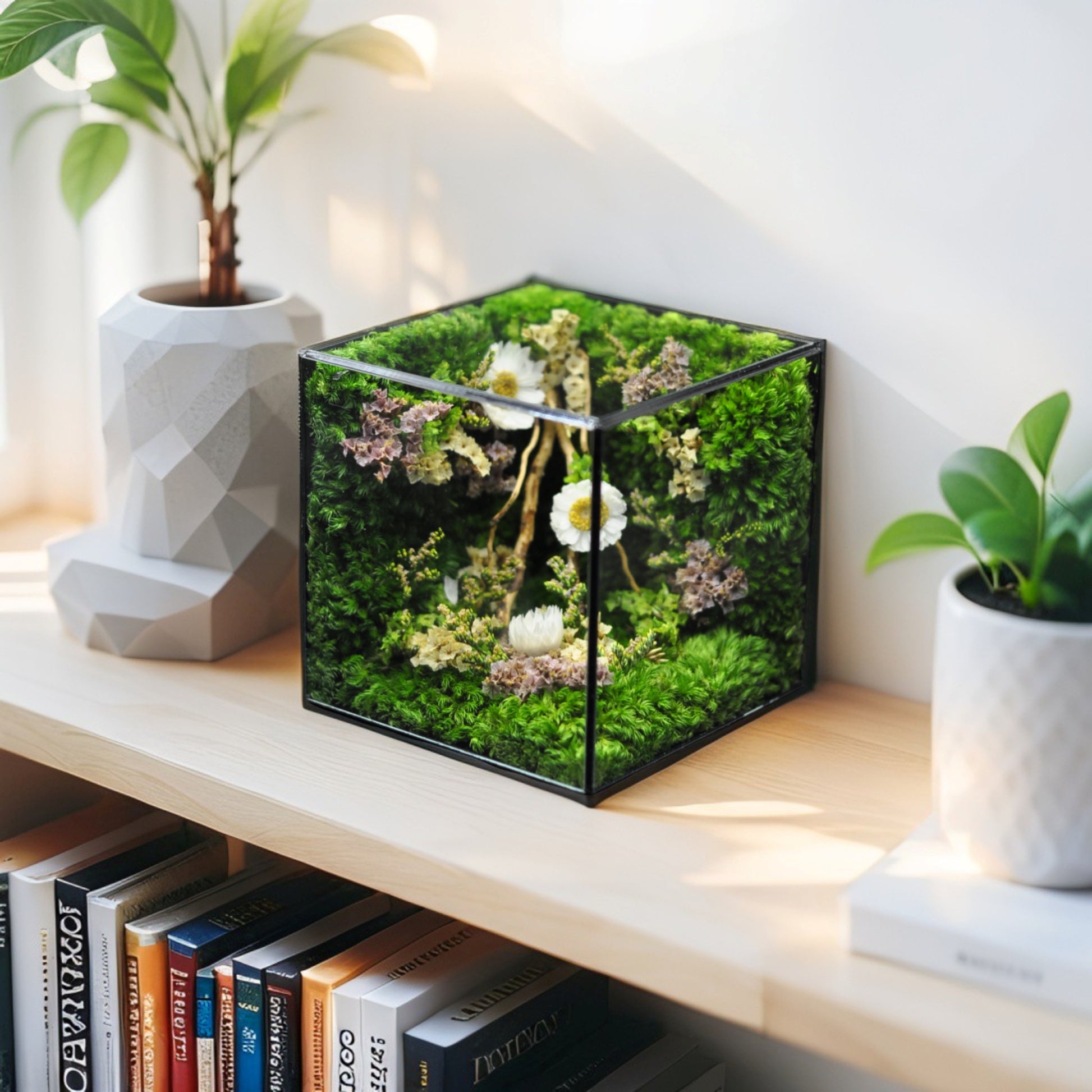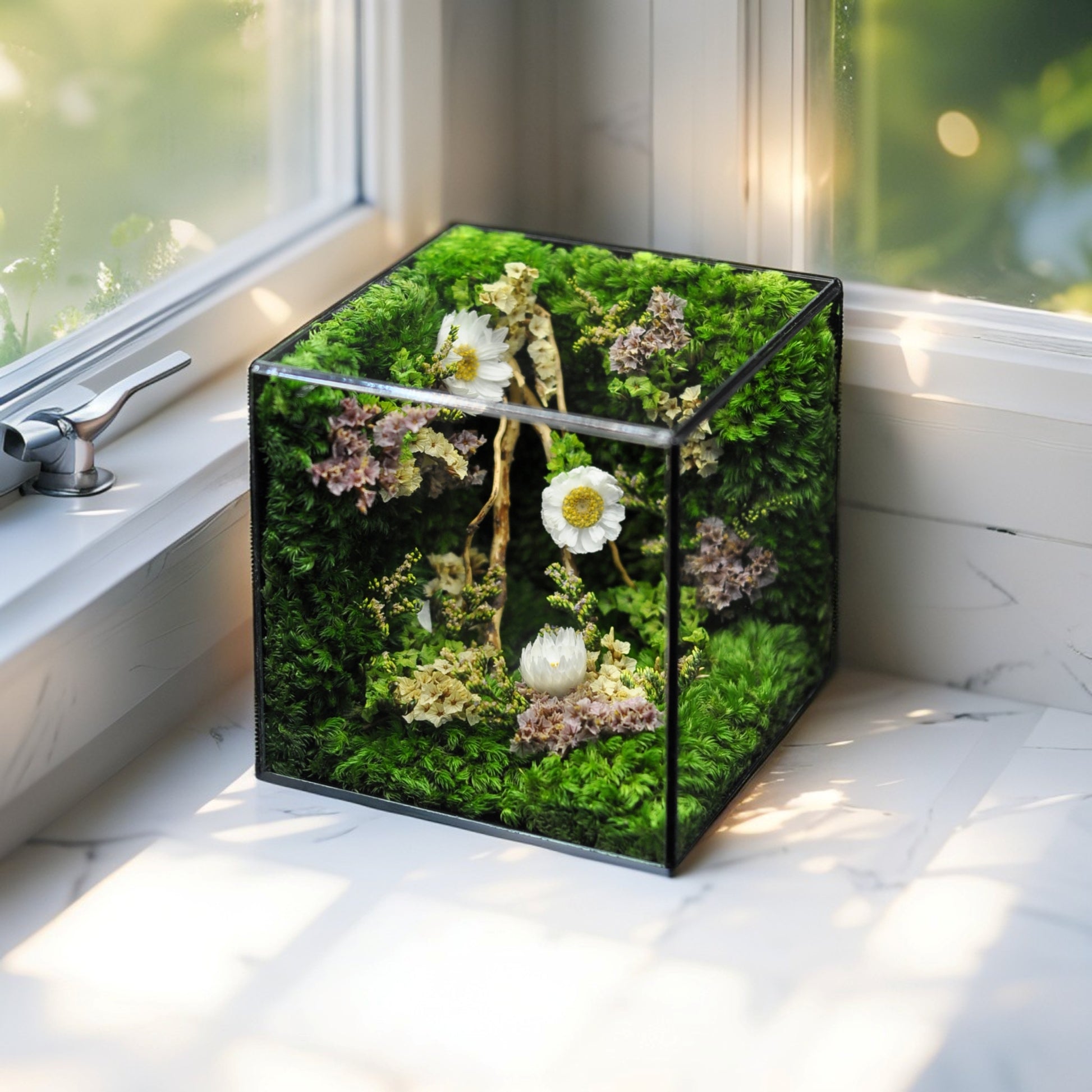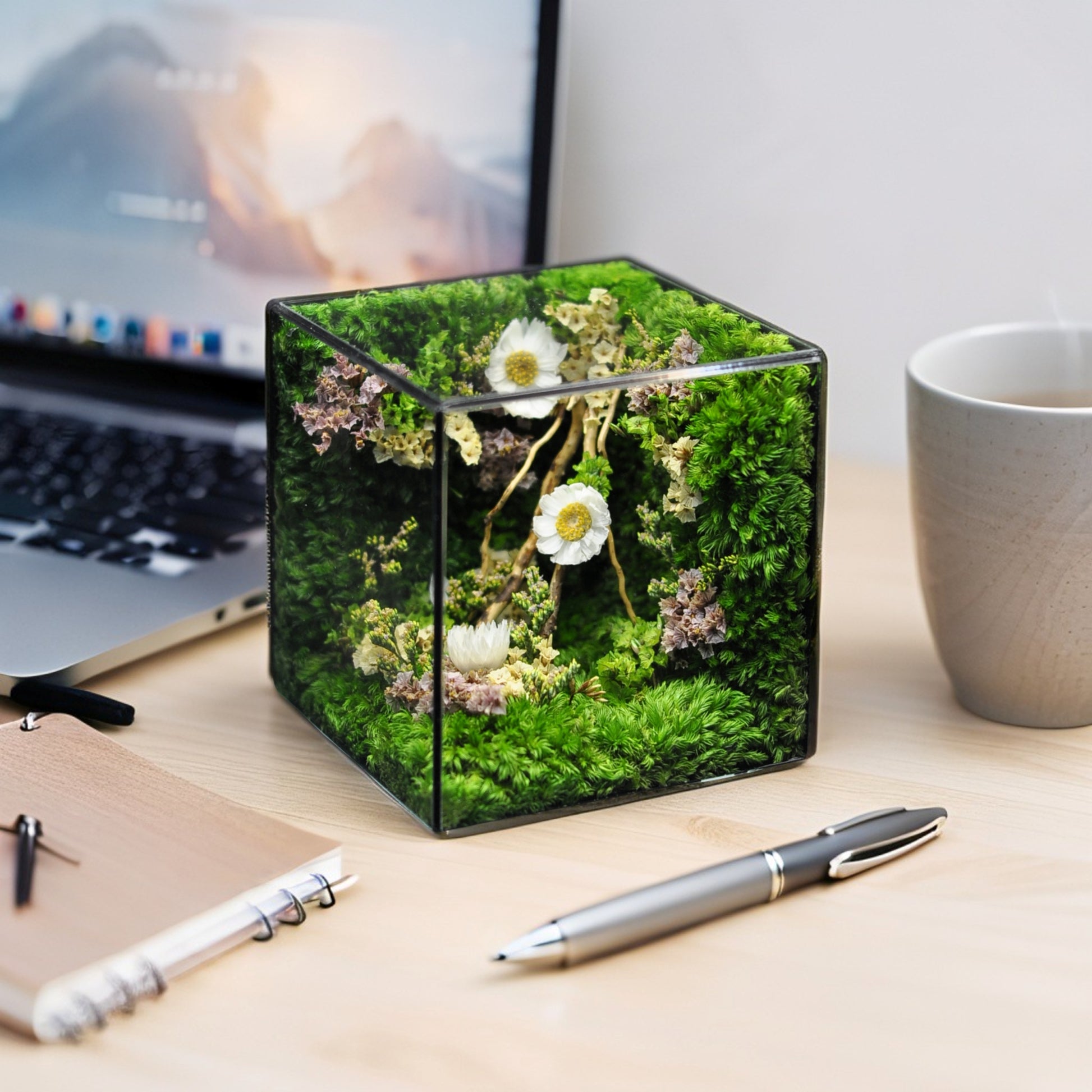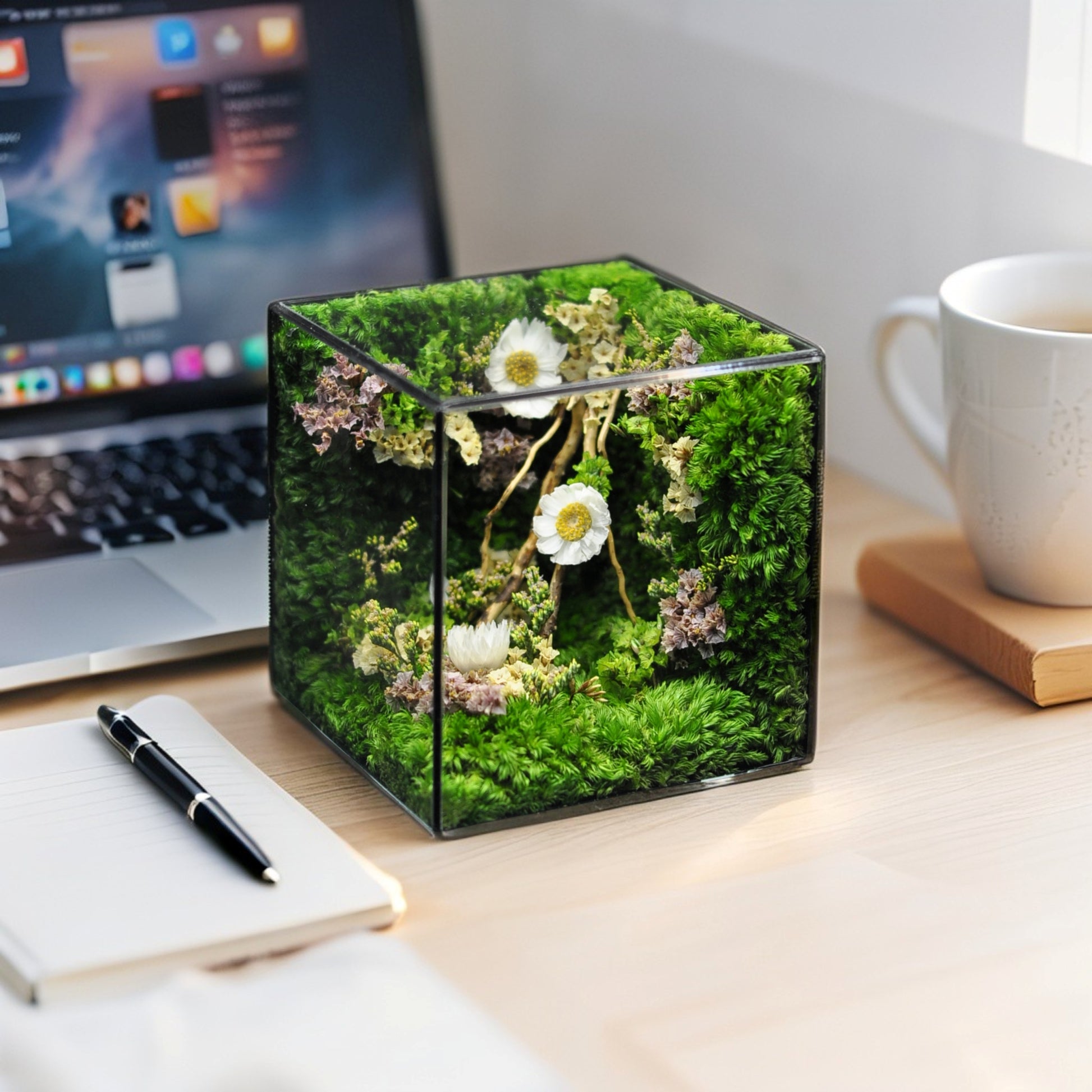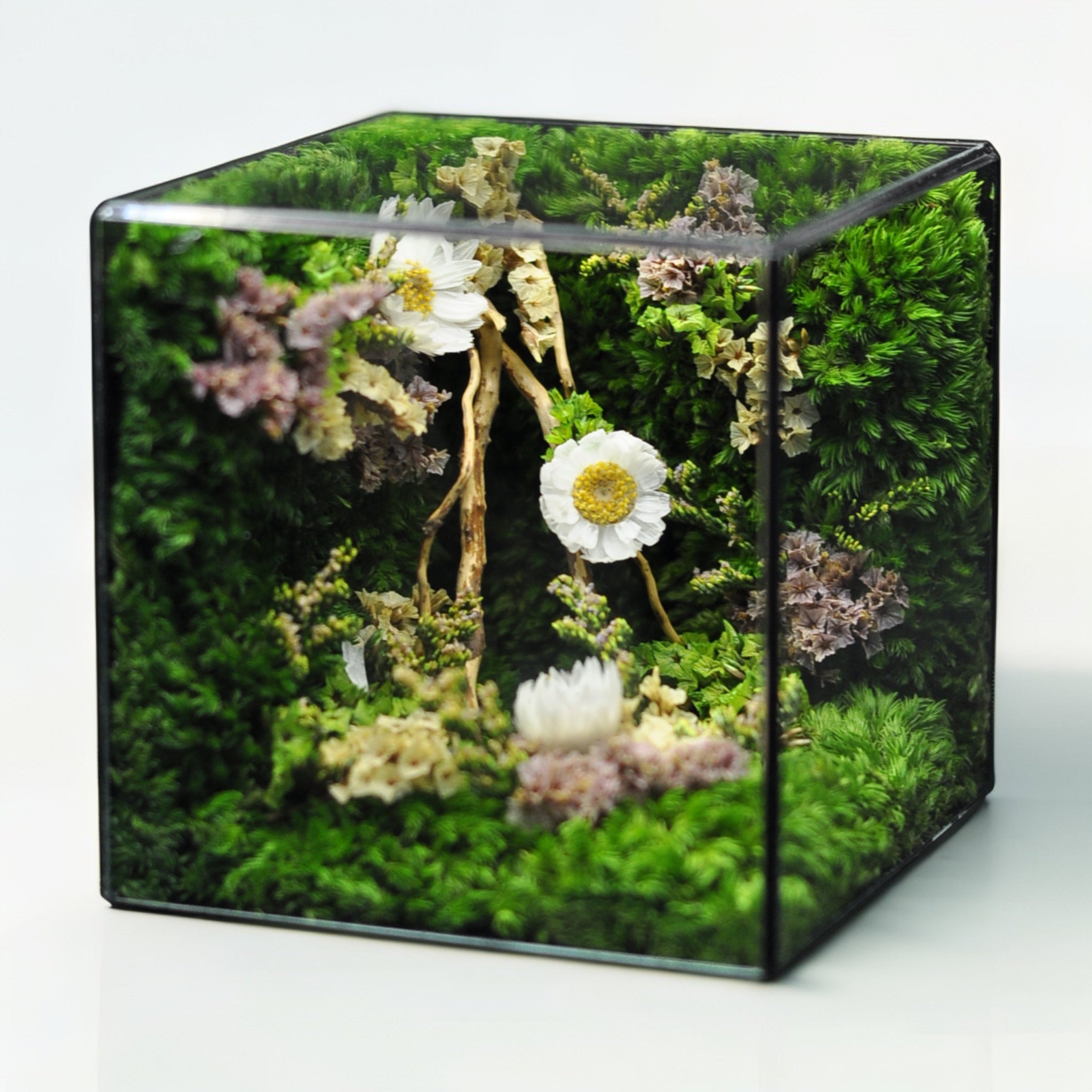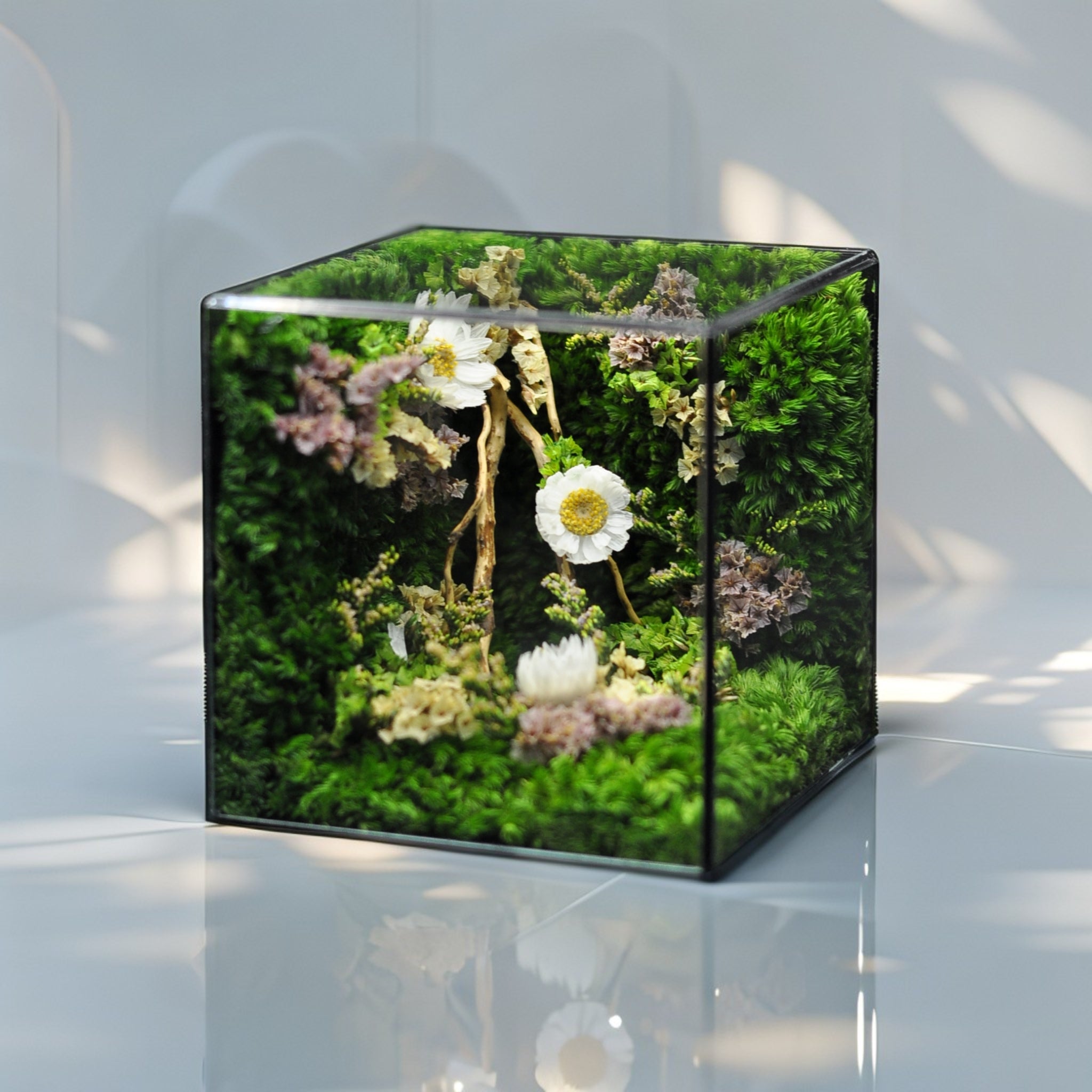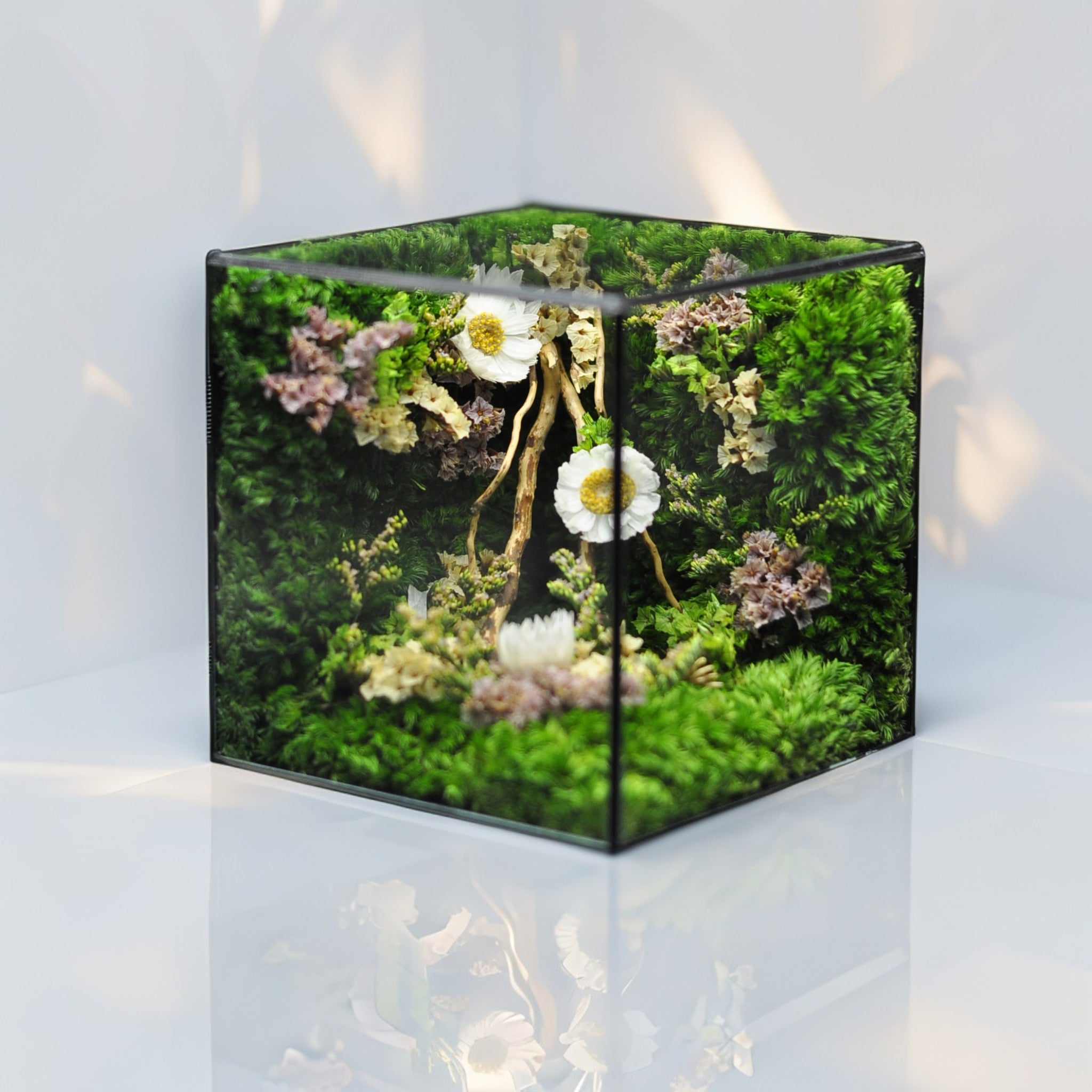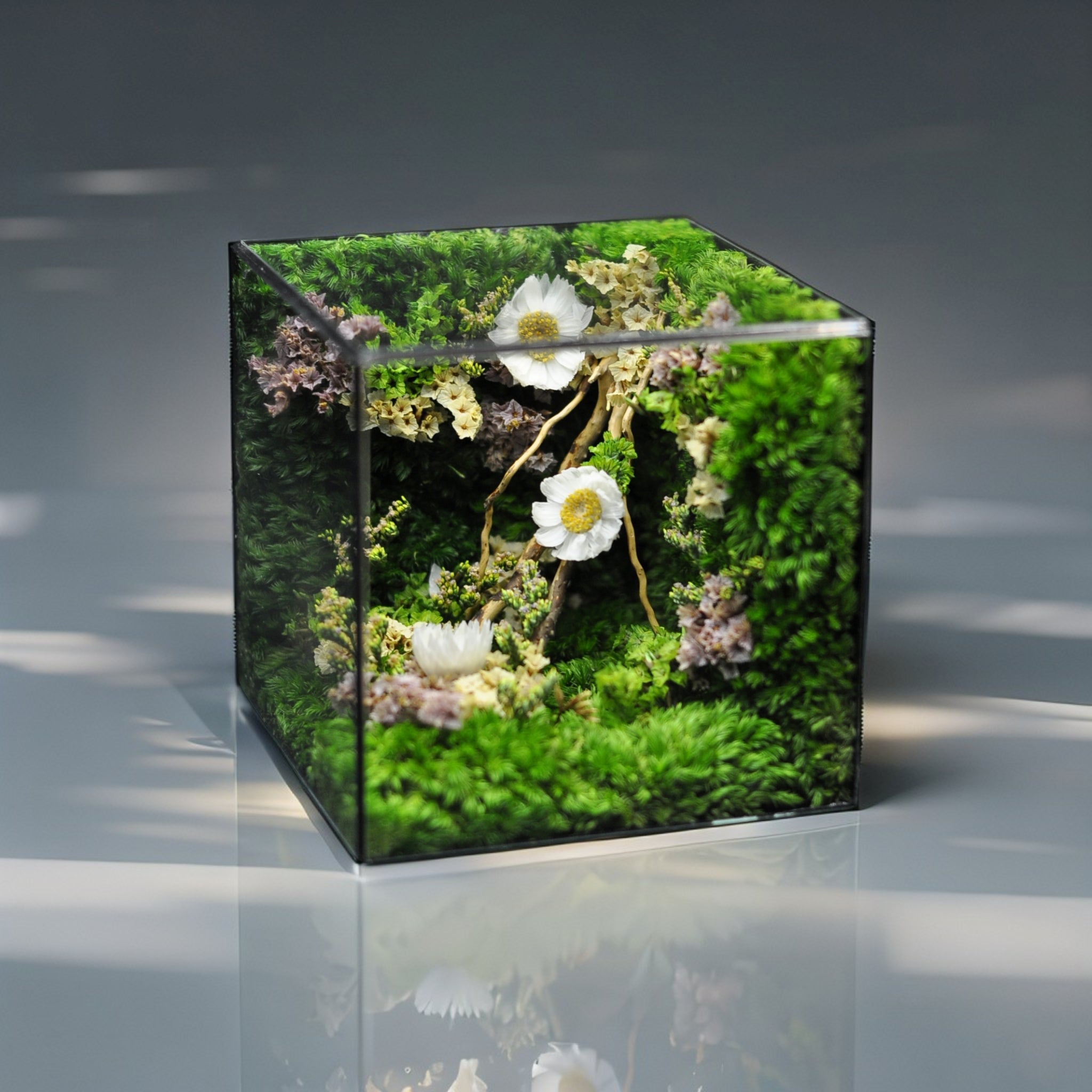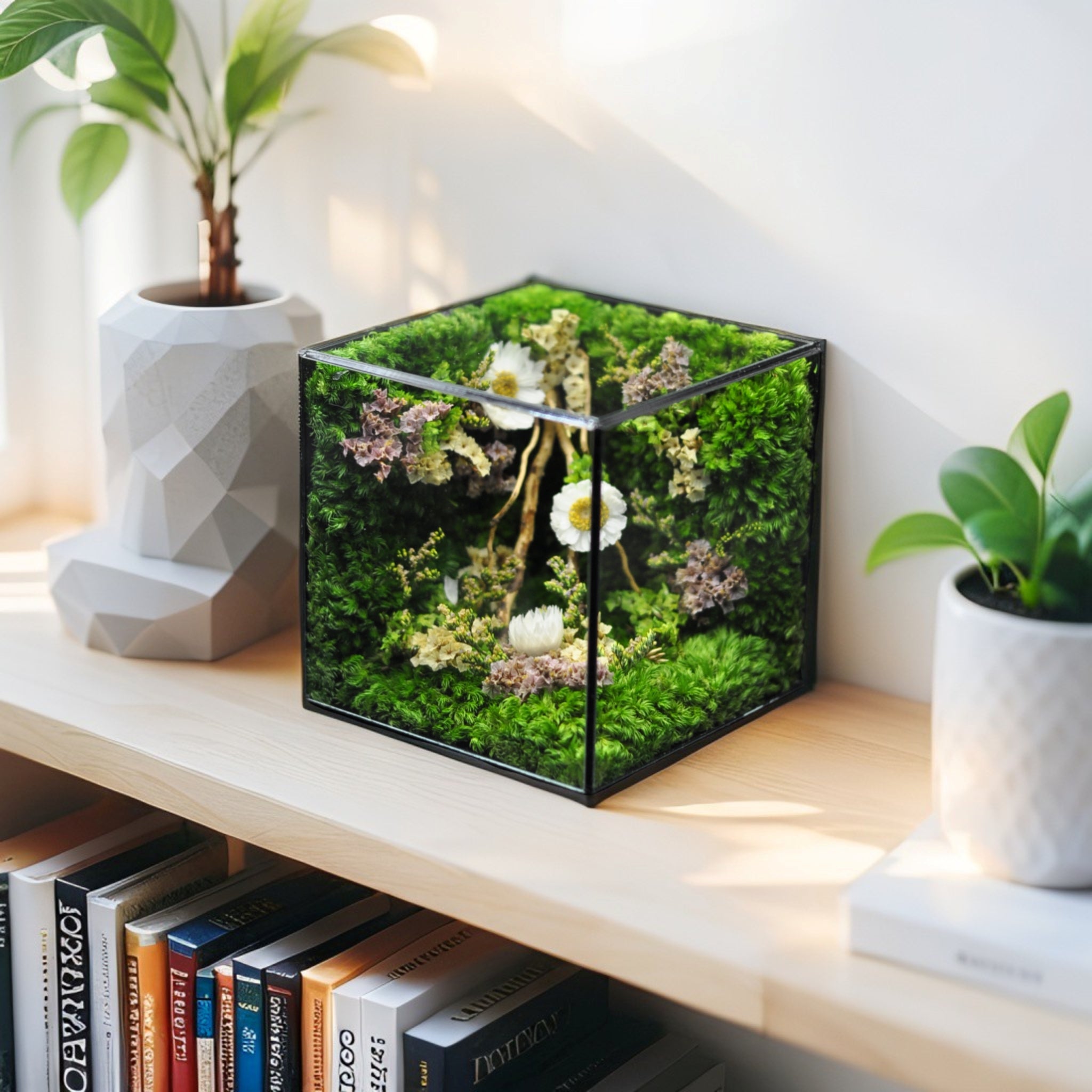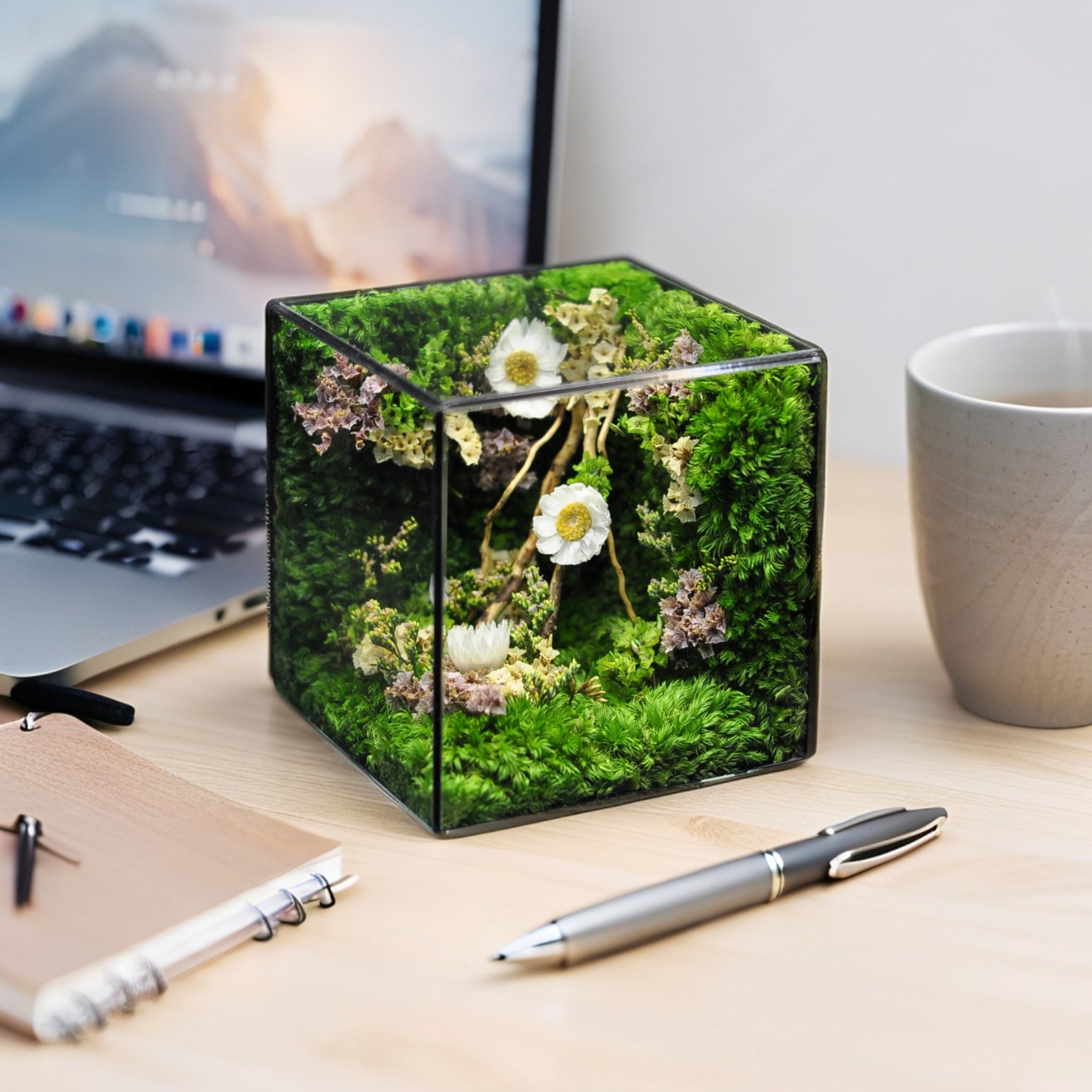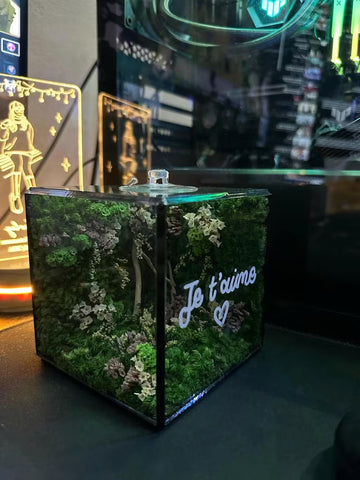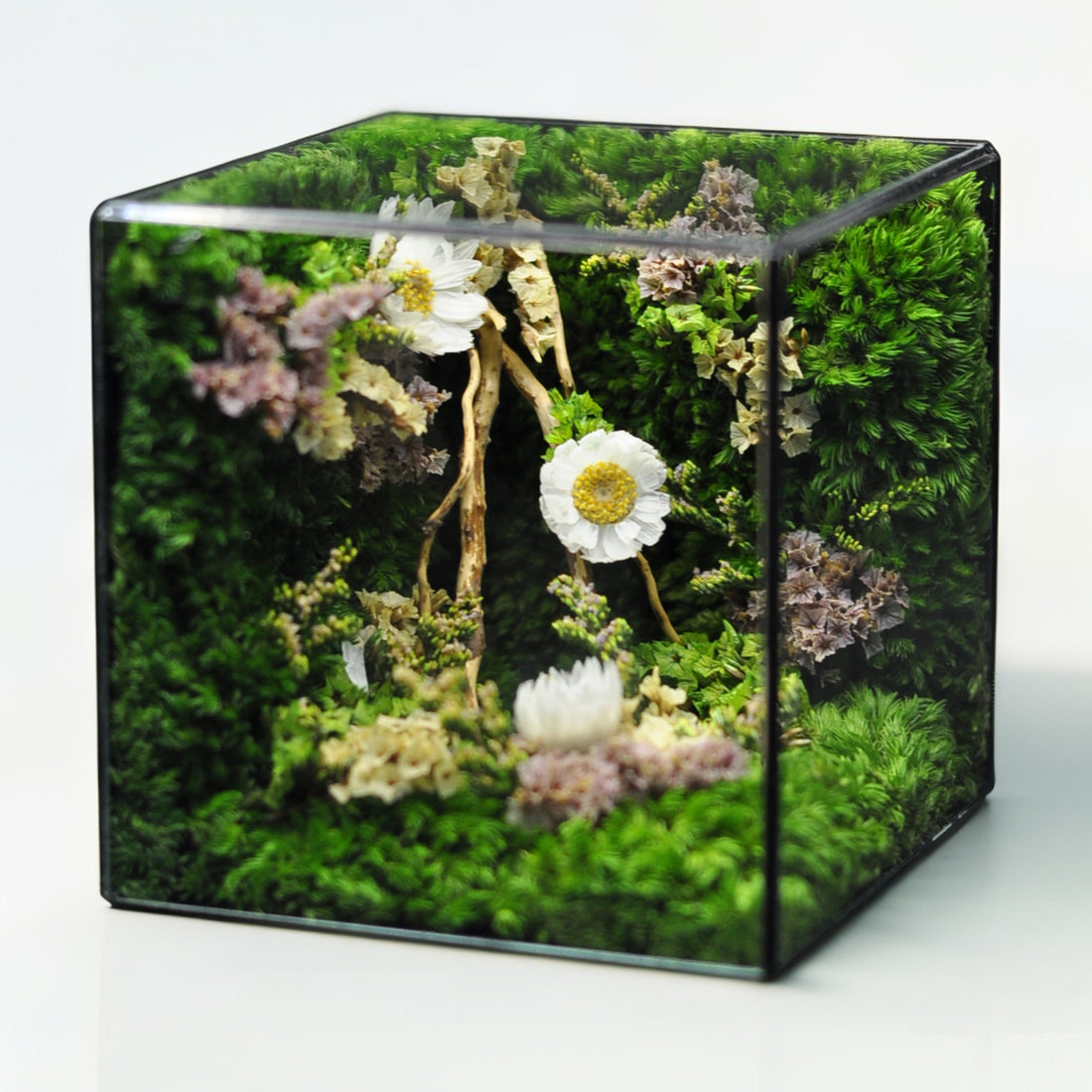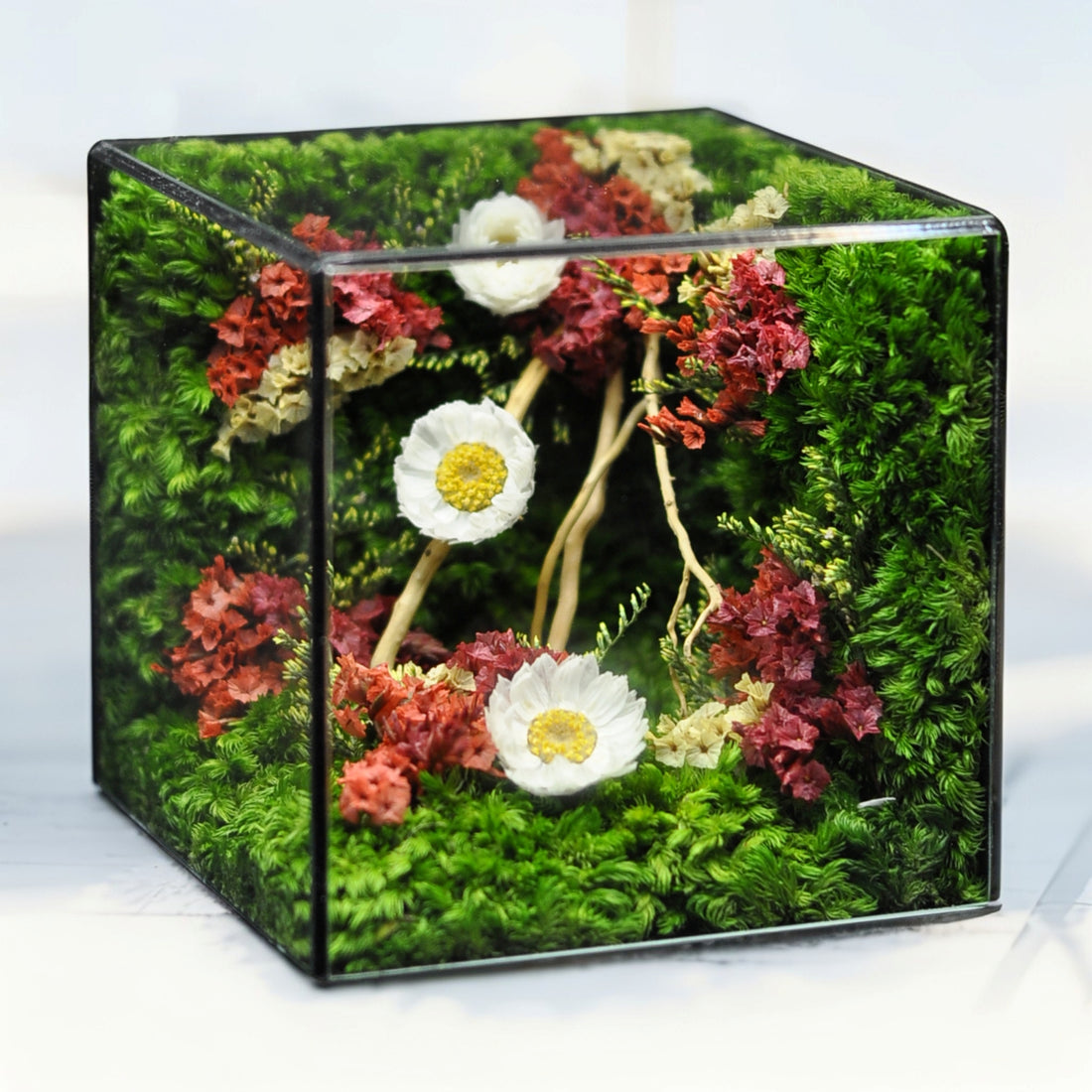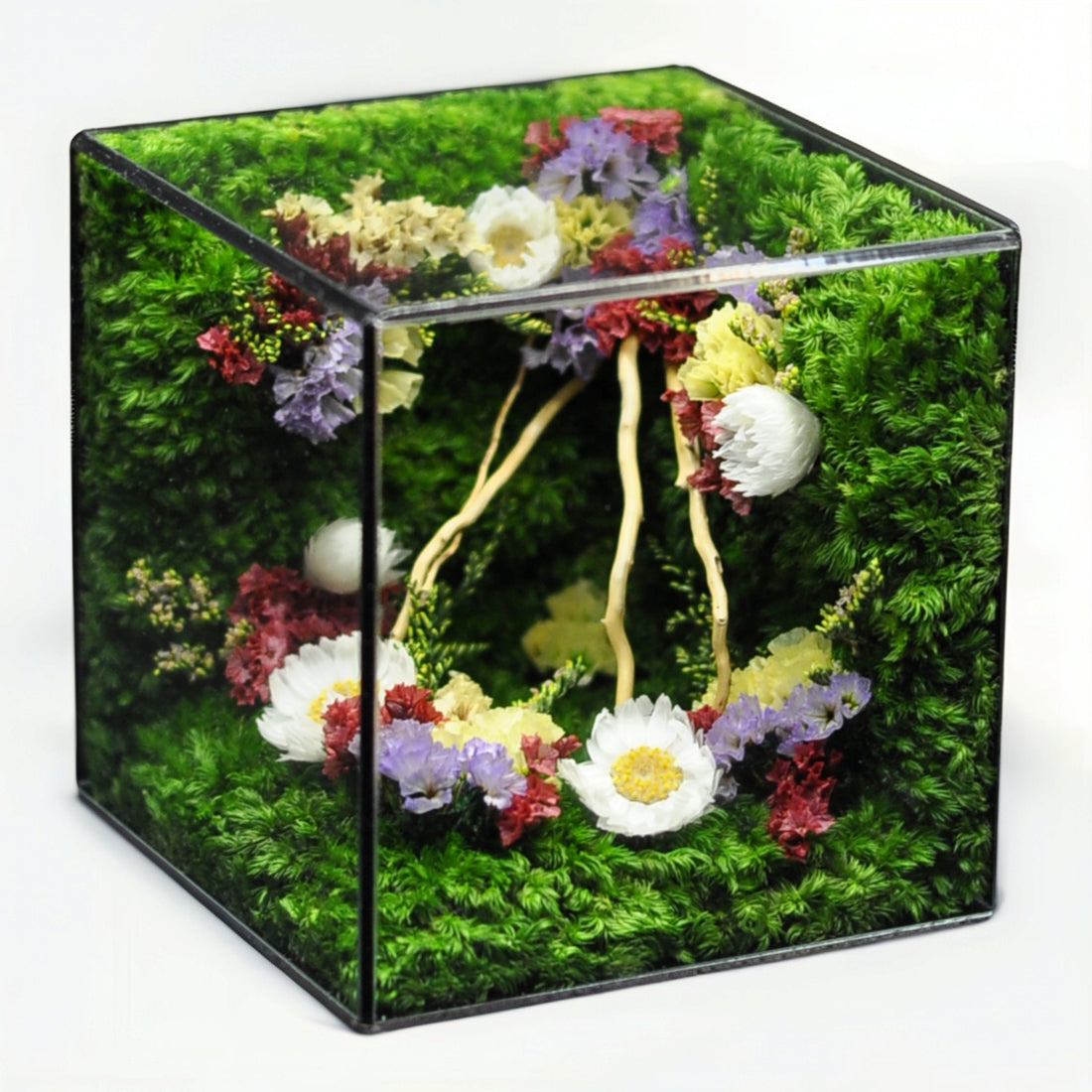Key Takeaways
Preserved moss offers a sustainable and stunning way to bring nature indoors without the fuss of live plants. This guide explores everything you need to know, from its different forms to creative uses and unexpected benefits.
- Discover diverse moss textures and forms: Learn about popular types like fluffy Reindeer moss, flat Sheet moss, and architectural Pole moss, each offering unique visual appeal for your projects.
- Enjoy nature's beauty with zero maintenance: Unlike live plants, preserved moss requires no watering, sunlight, or trimming, making it the ultimate low-effort green decor solution.
- Unlock endless creative decor possibilities: From striking preserved moss walls and unique art pieces to subtle tabletop accents, moss transforms any space with natural charm.
- Enhance your space's acoustics naturally: Beyond aesthetics, preserved moss acts as a natural sound absorber, reducing echo and improving the auditory environment for enhanced comfort and well-being.
- Embrace sustainable and biophilic design: Using preserved moss is an eco-friendly way to incorporate elements of the natural world into interiors, connecting spaces with nature for improved human connection.
Preserved moss bridges the gap between vibrant natural aesthetics and effortless home decor. Dive into the rest of the guide to explore specific types, step-by-step care tips (or lack thereof!), and inspiring DIY ideas to green your space.
Introduction
Did you know you can enjoy a moss wall that needs no water, sunlight, or pruning? Preserved moss brings the lush charm of a forest floor into your home, doubles as a natural sound absorber, and remains maintenance-free.
From fluffy reindeer moss and flat sheet moss to sculptural pole moss, this guide breaks down each variety’s texture and visual appeal. You’ll discover how to craft striking preserved moss walls and art installations, plus subtle tabletop accents—all while embracing sustainable, biophilic design.
Let’s explore effortless care tips, inspiring DIY ideas, and the surprising benefits of preserved moss that will transform your space with lasting green elegance.
Understanding Preserved Moss
What is preserved moss?
Preserved moss is freshly harvested moss treated in a preservation process that replaces the plant’s natural moisture with a glycerin-based solution. Unlike dried moss, which can become brittle and fade, or live moss, which requires ongoing care, preserved moss retains its supple texture and vibrant color for up to 8–10 years without soil, water, or direct sunlight.
How moss preservation works
The most common method immerses freshly cut moss in a bath of glycerin and water (approximately a 2:1 glycerin-to-water ratio) with non-toxic dyes added for consistent hues. Glycerin acts as a humectant, permeating the moss’s cellular structure to maintain softness and flexibility. Soak times range from 3–7 days depending on thickness; after draining and air-drying, the moss is ready for use. This eco-friendly process locks in natural colors and prevents decay without harmful chemicals or sealants.
Preserved moss vs live plants
- Maintenance: No watering, pruning, or fertilizing required vs frequent care for live greenery.
- Light: Thrives in low- or no-light environments; live plants need proper sunlight.
- Lifespan: Lasts 8–10 years when kept out of direct sun; live plants have variable lives and need repotting.
- Benefits & Limitations: Provides rich texture and color without allergens; does not photosynthesize or purify air like living moss.
With this foundation, let’s explore the key varieties of preserved moss that designers and DIYers love.
Exploring Preserved Moss Varieties
Reindeer moss
Cladonia rangiferina features a sponge-like, branching form in shades from ivory to deep forest green. Its bulbous structure creates three-dimensional accents in terrariums, picture frames, and low-relief wall art. Properly preserved reindeer moss remains springy and full-bodied for years.
Sheet moss
Flat and velvety, sheet moss offers seamless coverage across large areas. Available in light, medium, and dense weaves, it’s ideal for preserved moss walls that mimic a forest floor. Sheet moss adheres easily to panels and backings, transforming any room into a lush backdrop without watering.
Pole moss
Pole moss brings sculptural drama with its tall, columnar growth habit. Commonly used in vertical installations—decorative columns, 3D logos, freestanding art—its sturdy form maintains depth and interest in both residential and commercial settings.
Specialty blends and color-treated mosses
Combining textures (cushion, rock, tumbler varieties) adds depth to moss art. Eco-friendly, plant-based dyes expand palettes from soft pastels to jewel tones. Specialty blends may include lichen, bark, or miniature ferns for bespoke designs.
Having identified the main moss types, next we’ll cover the simple care routines that keep your installation looking fresh.
Care & Maintenance Requirements
Does preserved moss need maintenance?
Worried about upkeep? Good news: preserved moss requires almost zero regular care. It doesn’t grow, wilt, or attract pests. A quarterly dusting is all it takes to keep colors vibrant.
How to care for preserved moss
- Keep out of direct sunlight to prevent pigment fading.
- Maintain indoor humidity between 40–60%. Use a humidifier in dry climates and a dehumidifier in very humid spaces.
- Dust gently every few months with a soft brush or canned air on low setting. Never apply water or cleaning solutions.
Pro Tip: Place a hygrometer near your moss wall to monitor humidity and ensure optimal conditions.
Troubleshooting common issues
- Flat or compressed patches: Rather than spraying water, slightly raise ambient humidity or run a small humidifier.
- Duller areas: Touch up with non-toxic moss dye or replace with fresh offcuts.
- Mold risk in high-humidity zones: Keep humidity under 65% and ensure good air circulation.
- Exposure to high heat (radiators, fireplaces, heat vents): Position moss at least 2 ft away to prevent premature drying.
- Very dry HVAC air: Run a humidifier or place a shallow water tray near vents to maintain softness.
Now that you know how to care for preserved moss, let’s see how it can enhance both style and function in your space.
Functional & Wellness Benefits
Acoustic enhancement with moss walls
Preserved moss’s open-cell structure naturally dampens mid- and high-frequency sounds, reducing echo and ambient noise. Research and case examples demonstrate its impact:
- According to GreenSound Interiors, moss panels can reduce ambient noise by up to 20% in open-plan offices.
- In a 2021 pilot at a tech startup, adding moss panels raised employee focus by 15%, translating to an estimated $50,000 in productivity gains over six months.
- A Chicago law firm’s 50-sq-ft preserved moss wall cut lobby noise by 20%, saving $5,000 annually on traditional soundproofing.
- A Denver homeowner installed a 4x6-ft panel in a home theater, dropping echo by 15% and boosting audio clarity.
Biophilic design & sustainable decor
Studies in the Journal of Environmental Psychology (2022) show that visual connections to nature—live or preserved—lower stress and improve well-being. Medical offices and wellness centers report a 12% decrease in patient anxiety scores after installing preserved moss art, proving its power to create calming environments.
Longevity and eco-conscious impact
Preserved moss lasts 8–10 years before glycerin begins to degrade. It eliminates watering, soil, and fertilizers—cutting maintenance time by an estimated 90% compared to living walls (survey by EcoSpaces Interiors, 2019). At end-of-life, moss can be composted or reused, supporting a circular approach to sustainable decor.
Next, discover creative decor applications and DIY ideas to bring preserved moss into your projects.
Creative Decor & DIY Ideas
Preserved moss walls
Designs range from minimalist monochrome panels to living logos and geometric mosaics. Combine sheet moss for coverage with reindeer or pole moss for texture.
- Prepare backing (acoustic foam or plywood).
- Spray clear, low-VOC adhesive.
- Lay sheet moss panels, then press in textured moss.
- Frame edges to conceal seams.
Pro Tip: Install a warm LED strip behind your moss wall for subtle night-time ambiance.
Framed preserved moss art
Prime an MDF or foam board backing and sketch your design. Arrange moss types by color and texture, using thin foam layers under pole or reindeer moss for relief. Secure with botanical epoxy or hot-melt adhesive for a gallery-worthy finish.
Tabletop terrariums & accent pieces
Build miniature moss landscapes in glass cloches or open trays. Layer sheet moss, polished pebbles, driftwood, and twig accents for a no-light micro-forest—perfect for desks, shelves, or windowless bathrooms.
Inspiring DIY projects
- Moss message boards: Pin notes directly onto the soft surface.
- Coasters and placemats: Press moss into silicone molds, seal edges with clear resin.
- Seasonal wreaths: Combine cushion moss and dried florals on a wire frame.
- Holiday centerpieces: Dye small moss chunks red or gold for festive flair.
Before embarking on large-scale installations, equip yourself with the right materials and styling know-how.
Installation & Styling Tips
Materials and tools checklist
- Preserved moss panels and loose moss (reindeer, sheet, pole)
- Clear, low-VOC spray adhesive and botanical epoxy
- Backing boards (acoustic foam, plywood, MDF)
- Frames, sealants, and mounting hardware
- Utility knife, measuring tape, gloves, hygrometer
- LED strips and spotlights (optional)
Step-by-step moss wall installation
- Prepare substrate: Clean and, if using plywood/MDF, seal with primer.
- Measure and cut moss panels to fit.
- Lightly spray adhesive on backing; allow to become tacky (30 seconds).
- Press sheet moss into place, then fill seams with textured moss.
- Secure edges with a frame or trim.
- Inspect for loose areas and reapply adhesive as needed.
Styling for different interiors
- Minimalist: Use a single shade of sheet moss in a sleek frame against a neutral wall.
- Scandinavian: Pair soft green blends with light wood frames and white accents.
- Industrial: Contrast deep greens and colored moss with metal frames and exposed concrete.
- Accent lighting: Highlight textures with adjustable spotlights or concealed LED strips.
Sourcing & Purchasing Guide
Where to buy preserved moss for home interior design
Reputable online suppliers include Moss & Stone, Ecocraft, and VeggiWalls. Local florists or dried-flower wholesalers often carry small quantities. Look for Forest Stewardship Council (FSC) certification to verify sustainable harvesting.
Choosing the best preserved moss for wall art
Opt for thicker, denser moss panels for professional installations. Request sample swatches to check color accuracy and texture. Premium options offer longer-lasting pigments and superior resilience.
Sustainable decor options on a budget
- Blend offcuts and remnants from multiple projects for a patchwork effect.
- Upcycle old frames, shadowboxes, or wooden crates as unique backings.
- Experiment with natural dyes (beet, turmeric) on budget moss batches for seasonal color pops.
Conclusion
Preserved moss offers a sustainable, maintenance-free way to introduce texture, color, and acoustic and wellness benefits into any interior. From the soft relief of reindeer moss to expansive sheet moss walls and sculptural pole moss installations, designers and DIYers can tailor moss art to suit minimal, industrial, or biophilic schemes. With simple care—quarterly dusting and humidity control—these installations remain vibrant for up to a decade. Beyond aesthetics, preserved moss delivers acoustic dampening, stress reduction, and eco-conscious decor. Whether framing a micro-forest, crafting a moss wall, or accenting furniture, preserved moss transforms spaces into verdant retreats. How will you leverage this versatile material to elevate your next design project?
Frequently Asked Questions (FAQ)
Q: What is preserved moss?
A: Preserved moss is freshly harvested moss treated with a glycerin-based solution replacing its natural moisture, which keeps its supple texture and vibrant color for up to 8–10 years without needing soil, water, or direct sunlight.
Q: How does the moss preservation process work?
A: Freshly cut moss is soaked in a bath of glycerin and water (about a 2:1 glycerin-to-water ratio) with non-toxic dyes for 3–7 days; the glycerin permeates the cells to maintain softness and flexibility, then the moss is drained and air-dried, locking in color and preventing decay without harmful chemicals or sealants.
Q: Does preserved moss require any maintenance?
A: No watering, pruning, or fertilizing is needed—preserved moss requires virtually no regular care, only a quarterly dusting to keep colors vibrant.
Q: How should I care for preserved moss in my home?
A: Keep it out of direct sunlight, maintain indoor humidity between 40–60% (using a humidifier or dehumidifier as needed), and gently dust every few months with a soft brush or low-pressure canned air; never apply water or cleaning solutions.
Q: What’s the difference between preserved moss and live plants?
A: Preserved moss is static, maintenance-free, thrives in low- or no-light environments, and lasts 8–10 years without soil or water, while live moss requires regular watering, pruning, sunlight, and repotting, grows over time, and can photosynthesize and purify the air.
Q: Which preserved moss varieties are best for wall art and decor projects?
A: Sheet moss is ideal for seamless wall coverage, reindeer moss adds soft, cushiony texture, pole moss delivers sculptural depth, and color-treated blends offer custom palettes for bespoke designs.
Q: How long does preserved moss typically last?
A: When kept out of direct sunlight, preserved moss can maintain its texture and color for 8–10 years before the glycerin begins to degrade.
Q: How does preserved moss enhance indoor acoustics?
A: Its open-cell structure dampens mid- and high-frequency sounds, reducing echo and ambient noise by up to 20%, and has been shown to boost focus by around 15% in pilot studies, improving acoustic comfort in offices and home theaters.



